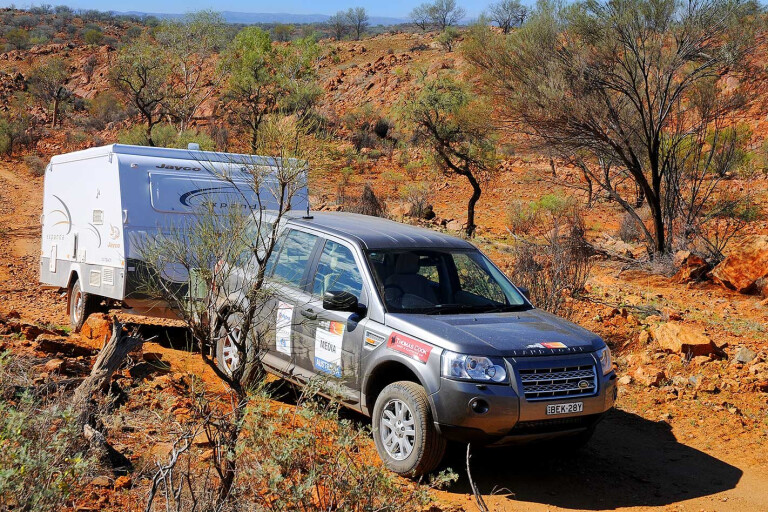
Running a media service for the recent 2008 Red Centre to Gold Coast Trial posed a serious cost/benefit question.
This feature was originally published in 4x4 Australia’s January 2009 issue
I wanted it all – a 4X4 capable of getting into remote outback stages of the 7600km event – and an RV that would be quick to set up, serve as a mobile home and media centre, yet wouldn’t break the bank when diesel was costing more than $2.30 per litre in some centres.
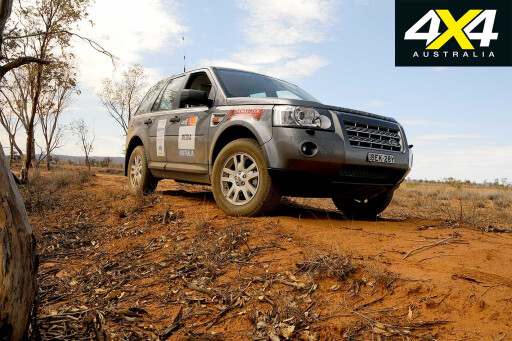 I set my sights on a compact turbo-diesel 4X4 with bush cred, rather than a soft-roader, which I knew would be out of its depth in some of the terrain the Trial would encounter.
I set my sights on a compact turbo-diesel 4X4 with bush cred, rather than a soft-roader, which I knew would be out of its depth in some of the terrain the Trial would encounter.
Most of these vehicles are rated to tow braked trailers weighing two tonnes or more and there’s a plethora of lightweight caravans and pop-tops on the market capable of sitting on their tow bars.
A standout on the spec sheets was Land Rover’s Freelander 2 TD4, which weighs in at just 1780kg, but whose 2.2-litre four-cylinder diesel pumps out an impressive 400Nm at 2000rpm. Plus its claimed combined cycle fuel consumption is a miserly 8.5L/100km.
From earlier experience we also knew it was tough; Land Rover claims the Freelander’s monocoque shell is the third toughest on the market, behind the Range Rover and Porsche Cayenne.
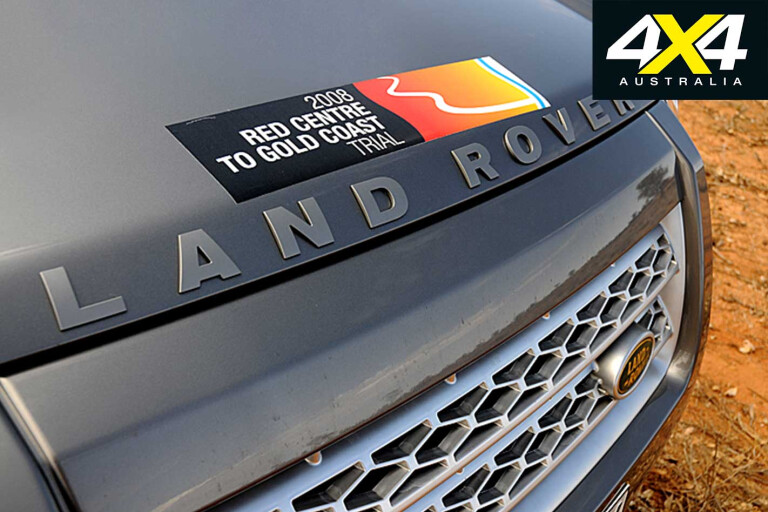
Moreover it has Land Rover’s Terrain Response 4X4 system and a claimed 210mm ground clearance, which we figured would be more than adequate for covering an event designed for two-wheel drive historic rally cars.
Now the RV. Under her recently issued ‘terms of travel’, my wife insisted on an internal en-suite shower/toilet if we were planning extended accommodation. And I insisted that the towed vehicle must have an off-road spec chassis so it could keep pace with the Freelander and hold together over rough, corrugated roads.
But when you start looking around for an off-road caravan or pop-top, with a full en-suite and all-up weight well under two tonnes, the field narrows markedly.
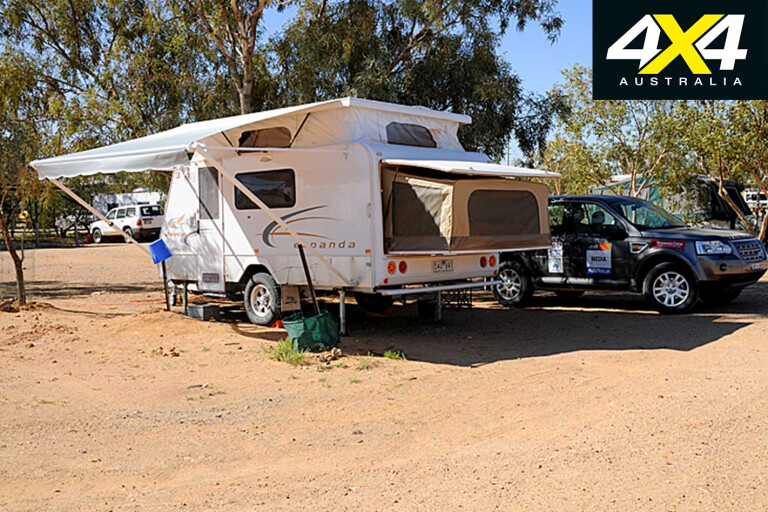
Jayco’s latest Expanda pop-top ‘Hard Lid’ range was a logical starting point. The entry level en-suite model with single drop-down double bed weighed in at just over 1500kg in basic ‘Outback’ spec.
In Outback trim, it comes with strengthened chassis, heavy duty leaf-spring suspension, more ground clearance and some extra stone shielding.
Even with its dual 90-litre water tanks topped up, two full 9kg gas bottles, a full jerry can of fuel on the drawbar and all the usual home and kitchen comforts on board, it was still comfortably under the Freelander’s two-tonne towing limit.
I had initial misgivings when I arrived at Jayco’s impressive new Melbourne head office and factory. While 4.5m long and more than 2.0m wide, the Freelander’s footprint is not that much smaller than a Discovery 3, but the Outback Expanda towered over it on the tow bar. However, it only took the first kilometre or so to be convinced that the TD4 was more than up to the job of towing what was effectively its own weight.
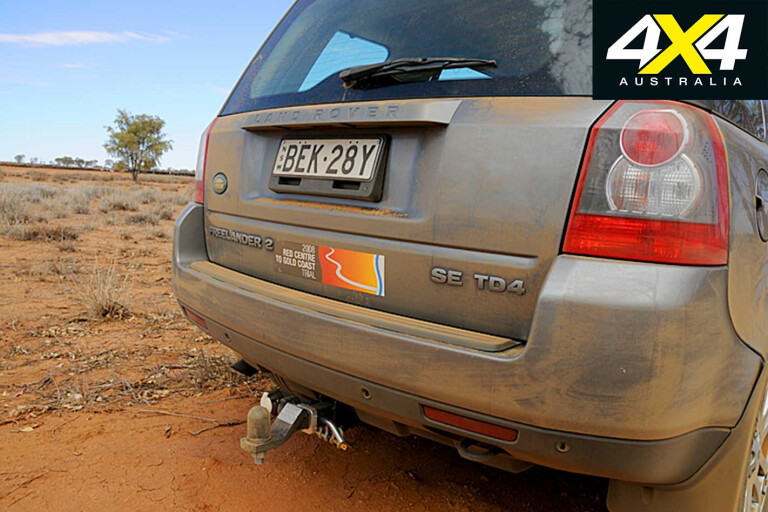
It was also interesting to see how the Expanda’s 150kg tow ball load made very little difference to the Freelander’s ride height, despite the absence of any load-sharing device, as Land Rover officially disapproves of these.
Like most compact 4X4s, the TD4 has an on-demand 4X4 system, which means that it drives the front wheels most of the time, but dials in torque to the rear wheels when additional traction is required.
Starting off, particularly on a slope or with some steering lock on, there’s a brief steering tug from the front wheels as the torque kicks in; there’s around 250Nm on tap from just 1200rpm and torque peaks at 400Nm just 800rpm higher.

This instant power-up means the TD4 is never an embarrassment when towing in traffic, even with the fully laden Expanda behind. Likewise, performance on the highway and steep hills is good.
A lot of credit must go to the excellent six-speed ‘Command Shift’ automatic transmission. The nicely-spaced ratios complement the meaty torque curve, always keeping the engine on the boil in the 1750-2250 rev range.
However, when we were travelling into constant head winds north of Port Augusta, the transmission was reluctant to hold sixth gear at speeds above 100km/h, preferring to run at around 2200-2300rpm in fifth.
We tried the manual mode to force it to hold sixth, down to as low as 1500rpm, but the power train clearly wasn’t happy and fuel consumption rose. This is not recommended because of its potential to overheat the transmission.
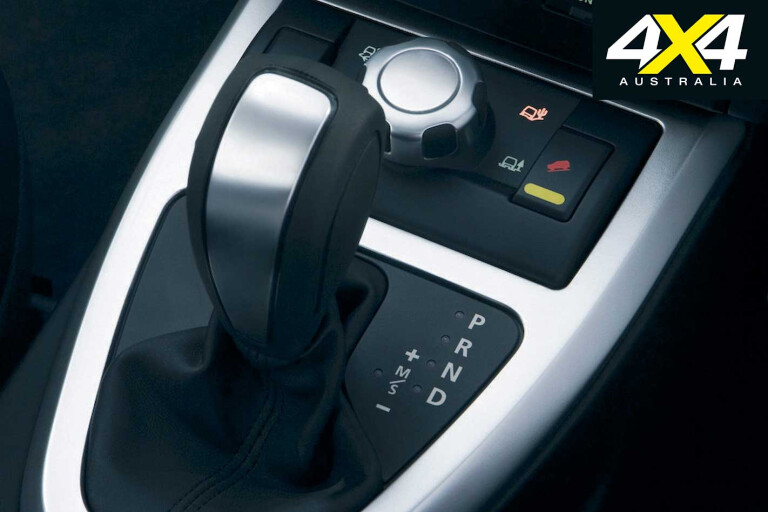
There was never any question of keeping up with the Trial, as competitors were being asked to average more than 750km a day over often-rough and always unmade outback roads.
Our game plan was to shortcut the route and intersect the event in various locations – Longreach, Birdsville, Bourke and Goondiwindi, while pacing it to the Broadbeach finish. So, as the field left Alice for Mt Isa, Normanton and Cairns, we headed for Longreach, via the East MacDonnell Ranges and Boulia.
We also did a day trip without the Expanda into the beautiful Ruby Gap Nature Park in company with a current model Jeep Grand Cherokee. While the Jeep crew reported a few ‘touches’ as we scrambled through some rocky river beds, the Freelander TD4 came through unscathed.
The Freelander’s long 2660mm wheelbase and generous 1.6-metre track make it a stable towing platform. And the long-travel suspension results in a comfortable ride on crook surfaces.
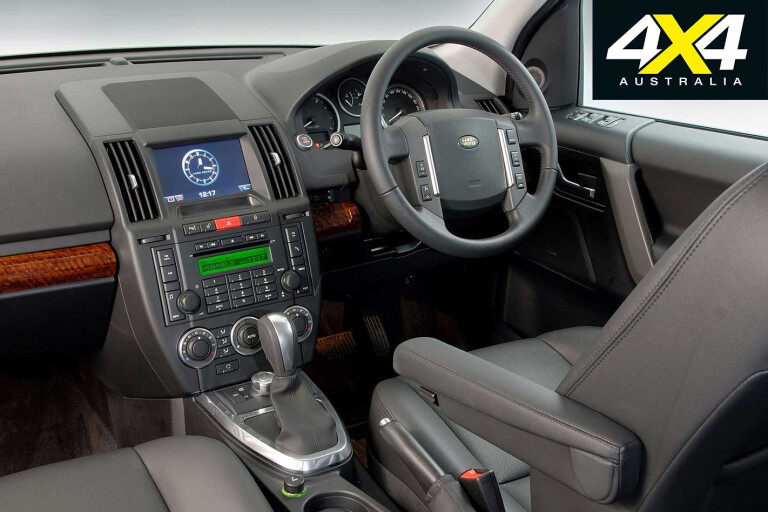
Heading to Birdsville, we chose a short cut to the Plenty Highway via the little-used Cattlewater Pass, to save ourselves around 50km compared to the route via Gemtree. But when the road gradually reduced to two rocky wheeltracks that dropped in and out of the adjacent riverbed, we sensed we were in trouble.
While the Freelander would have done the track solo, it was far from ideal towing the wide Expanda, which was rubbing both shoulders with the scenery and being asked to perform articulations well beyond its ‘outback base-station’ role.
The many humps on the track caused the low-slung spare wheel (mounted under the front A-frame) to act as a grader and one unseen protruding rock dispatched the flimsy side step.
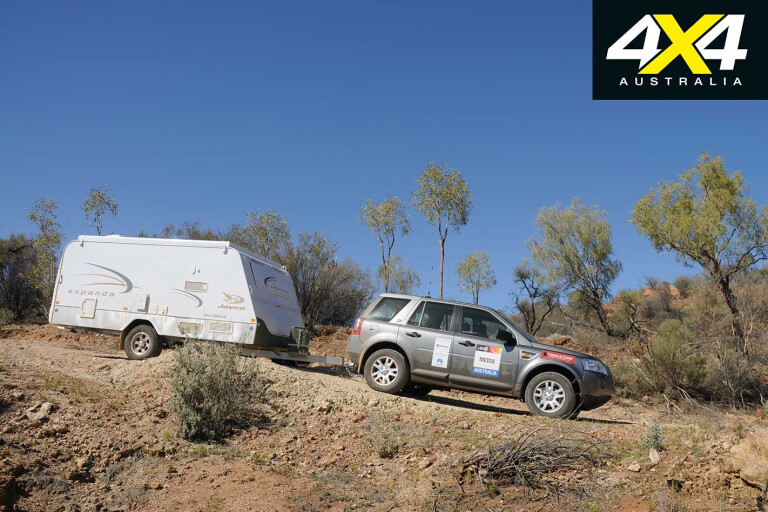
What really impressed us through was how the Freelander coped without low-range gearing and with highway-spec 235/60R18 rubber. At one stage, after crawling through a rocky river bed, we were faced with a substantial climb up a rutted section of the track.
We had serious doubts about half way up, as all four wheels started scrabbling, but the Freelander found enough grip and lugged its way up, dropping down to 1000rpm at times in first gear.
Getting down the other slippery side with the equally-weighty Expanda pushing us really tested the Freelander’s Hill Descent Control, which came into its own, steadying the car while the electric trailer brakes acted as a land anchor. It took us three hours to cover 71km, so the Plenty Highway was a welcome sight.
Over the Queensland border, conditions deteriorated on the Donohue Highway, with large bulldust holes requiring a keen eye and careful progress. But at no stage did the Freelander’s front end bottom-out, despite some heavy hits. Dust sealing proved good, too.

The run into Birdsville via the Channel Country is no longer a fearsome trip, with long strips of bitumen covering the frequently-flooded parts. The final unmade section looks like it was retained for tourist credibility to this former outpost, rather than a lack of funding.
After catching up with the Trial again, we dashed south-east for Bourke, eschewing the rougher route south via Tibooburra taken by Trial competitors. After 277km on the Birdsville Development Road, we hit the Diamantina Highway and bade farewell to the gravel for the rest of the run to Broadbeach.
The journey home was then straightforward, with the only drama being the loss of electric trailer braking for several hundred kilometres, after the plug became dislodged. But it says something for the Land Rover’s brakes that we hardly noticed.
.jpg )
The verdict: if you are planning some serious outback slogging with a full-size, fully-equipped caravan in tow, then bite the bullet, buy a LandCruiser, Patrol or Discovery 3, make easy work of it and be prepared to pay the big fuel bills.
But if you simply want a rig that can take you on to some of the most fascinating parts of Australia, then you could always consider a combo like the Freelander and the Expanda… and pocket the considerable savings.
Doing the sums
The total RRP package cost of our rig was $52,490 for the Freelander TD4 SE and $36,900 for the Expanda 14.44-3, with pull-out awning, reverse cycle airconditioning and deep-cycle battery.
We covered 8485km for a total diesel fuel bill of $2314 – an average fuel cost of 27 cents per kilometre travelled, of which less than 250km was without the Jayco Expanda in tow. This worked out at 15L/100km at an average fuel cost of $1.80/litre.
Between Port Augusta and Alice Springs, travelling mostly into a head wind, the Freelander consumed an average of 16.5L/100km while sitting on 100km/h for the 1000km journey.
On flat bitumen, while cruising at a steady 80-90km/h, our towing consumption dropped to 14.5L/100km, however, undulating unmade roads in good condition saw this climb to 16L/100km.
Travelling solo into Ruby Gap Nature Park, at an average speed of 28.2km/h, the Freelander returned 14.3L/100km.

COMMENTS